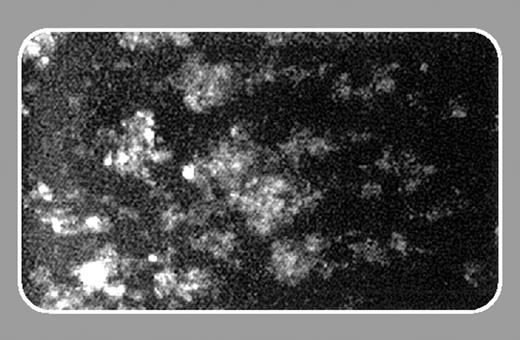A defining characteristic of many blood cells is their ability to attach to the vessel wall from flowing blood. Of all blood cells, platelets are uniquely able to attach efficiently at shear stresses exceeding 10 dynes/cm2 , a property that reflects their preeminent role in stanching blood loss in areas of high flow velocity and high shear stress. This specialized function is carried out by the glycoprotein Ib-IX-V (GPIb-IX-V) complex, a peculiarly adapted agglomeration of 4 polypeptides that binds its vessel wall ligand, von Willebrand factor (VWF), through a ligand-binding domain situated atop a long mucin stalk. This interaction is insufficient to firmly arrest the platelets, allowing them only to roll on the surface until an integrin (either α2β1 or αIIbβ3) is engaged. Integrin activation and other prohemostatic reactions are facilitated by intracellular signals generated by VWF binding. Although the 4 GPIb-IX-V poly-peptides lack kinase activity and are not tyrosine phosphorylated, VWF binding activates a number of signaling pathways involving tyrosine and phosphatidylinositide phosphorylation,1 facilitated by localization of a portion of the complex to lipid rafts.2 Among the phosphorylated substrates in human platelets are 2 membrane proteins containing immunoreceptor tyrosine-based activation motifs (ITAMs), the Fc receptor FcγRIIA, and the Fcγ chain.FIG1
In this issue of Blood, Rathore and colleagues (page 3658) demonstrate that in addition to activating stimulatory pathways, the GPIb-IX-V-VWF interaction produces signals that lead to phosphorylation of platelet endothelial cell adhesion molecule-1 (PECAM-1), a transmembrane protein containing 2 immunoreceptor tyrosine-based inhibitory motifs (ITIMs) and previously shown capable of negatively regulating the ITAM-containing receptors by engaging the hematopoietic phosphatase Src homology 2-containing tyrosine phosphatase 2 (SHP-2), which dephosphorylates ITAMs. This study extends the inhibitory role for PECAM-1 in regulating postadhesion signaling, a role previously described for collagen-induced signaling.3,4 Using platelets from mice lacking PECAM-1, these investigators demonstrate an increased rate, but not extent, of Fcγ chain phosphorylation upon VWF binding. This correlates with increased platelet spreading on a VWF surface, enhanced aggregation to VWF/botrocetin, and enhanced thrombus formation on a VWF surface under flow.
A major question raised by these studies is teleologic: why should platelets possess such an inhibitory pathway, particularly given that most platelet stimuli positively feedback to activate other platelets? Activated platelets, for example, produce the potent platelet agonist thromboxane A2, release granules containing the agonists adenosine diphosphate (ADP) and serotonin, and externalize negatively charged phospholipids that facilitate coagulation and generation of the most potent agonist, thrombin. One clue is provided in the study of thrombus formation, where the inhibitory effect of PECAM-1 on thrombus accumulation was not seen at the highest shear stress. Perhaps the stimulatory pathway protects against one potentially deleterious aspect of the GPIb-VWF interaction: it is induced in the fluid phase by high shear stress and is largely responsible for shear-induced platelet aggregation and the production of embolic microthrombi. In this situation, despite the high shear stresses required, the strain applied to the bond is low because the ligand is not fixed to a surface stationary with respect to the flowing blood. Thus, fluid-phase association at high shear stress is similar to the attachment of the platelets to a stationary surface at low shear stress—a situation in which PECAM-1 markedly attenuates the activation signals. This possibility will have to be tested experimentally. Nevertheless, the data presented by Rathore et al provide tantalizing insights into the potential physiologic relevance of adhesion-induced inhibitory pathways.


This feature is available to Subscribers Only
Sign In or Create an Account Close Modal